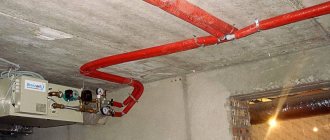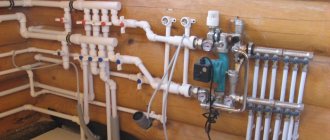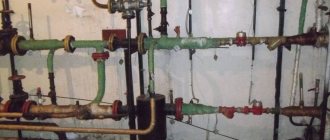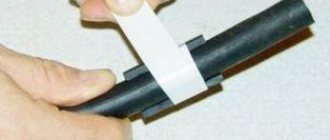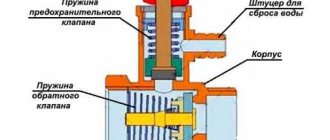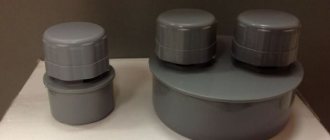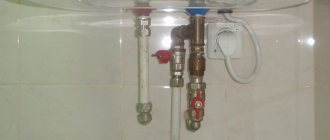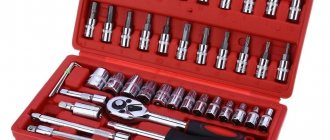Date of publication: September 13, 2020. Category: Automotive.
An adsorber (often called an absorber) is one of the components of a car that is responsible for absorbing and neutralizing gasoline vapors leaving the tank. Many car owners believe that this is a completely unnecessary device that only creates unnecessary problems, so they often remove it altogether.
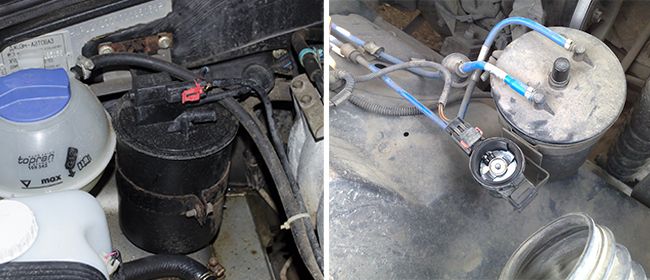
However, increased consumption of gasoline and other problems in the operation of the system, as a rule, occur only if the absorber valve fails. Therefore, before ruthlessly removing this node, it will be useful to learn a little more about the features of its operation and the procedure for changing the device.
What is the adsorber used for?
During the operation of the vehicle engine, the gasoline heats up a little, emitting very volatile vapors. Their formation is enhanced by the vibration of a moving vehicle. If the vehicle does not provide for a system for neutralizing harmful vapors, and primitive ventilation is installed, then the formations are simply taken out into the street through special openings.
This picture was observed with almost all old carburetor cars (which is why the car often smelled unpleasantly of gasoline) before the EURO-2 environmental standard, which controls the level of harmful fumes into the atmosphere, appeared. Today, every car must be equipped with an appropriate filtration system to meet the standards. As a rule, the simplest of them is the adsorber.
Replacing the adsorber
You can replace the adsorber with a VAZ 2110 without any difficulties. It is enough to study its fastening and connecting hoses to it. Buying a new adsorber is a minimal investment. We turn off the hoses and tubes one by one (for a start, you can mark them with a felt-tip pen or colored tape), remove the old adsorber, install a new one. Then, in the same order, we connect the hoses and tubes. Attention to your car is always justified: timely replacement of the adsorber will help you reduce fuel consumption, reduce the risk of breakdowns in the fuel system, and provide safety for you and your passengers.
What is an adsorber VAZ 2114 and for what purpose is it installed on a car? And it is worth remembering such a thing as European standards for the toxicity of cars. Every year they become tougher, only those cars are produced on the roads that emit into the atmosphere the permissible amount of harmful substances. Someone will say that Europe is small, and it really needs it so that it doesn’t suffocate in its smog (and in England it has always been able without cars). And for the Russian Federation this is irrelevant - a large territory and a huge amount of forests that require carbon dioxide for life.
But just in order to supply cars to other countries, they have to be improved and adjusted to standards, including environmental ones. And immediately you need to highlight two main points:
- An absorber is a substance that absorbs vapors. In this case, we are dealing with activated carbon. It is also used in gas masks.
- An adsorber is a device in which the vapor absorption process takes place.
This is, in general terms, applicable specifically to cars. In fact, absorbers can be of several types, like adsorbers. But if you need it, consult your chemistry textbooks.
What is a filter element and how does it work
In simple terms, the absorber is a large can filled with activated carbon. In addition, the system contains:
- Separator with gravity valve. It is responsible for trapping fuel particles.The gravity valve, in turn, is used very rarely, but in an emergency (for example, if the car overturned during an accident), it will prevent fuel from overflowing from the gas tank.
- Pressure sensor. It is necessary to control the level of gasoline vapors in the tank. As soon as their level is exceeded, harmful components are discharged.
- Filtering part. In fact, this is the very same can with granular activated carbon.
- Solenoid valve. It is used to switch between the modes of capturing the emitted gasoline vapors.


If we talk about the principle of the system, then it is very simple:
- First, gasoline vapors rise in the gas tank and are sent to the separator, where partial condensation of the fuel takes place, which is sent back to the gas tank in liquid form.
- That part of the vapor that could not settle in the form of a liquid passes through the gravitational sensor and is directed to the adsorber.
- When the car engine is off, gasoline vapors begin to accumulate in the filter element.
- As soon as the engine starts, the canister valve comes into play, which opens and connects the canister to the intake manifold.
- Gasoline vapors combine with oxygen (which enters the system through the throttle assembly) and pass into the intake manifold and engine cylinders, where harmful vapors burn out together with air and fuel.


As a rule, it is the adsorber valve that fails. If it starts to open and close in the wrong mode or completely breaks down, this can negatively affect the operation of the entire car and provoke breakdowns.
What is the VAZ 2114 adsorber for?
Now let's arrange a little educational program, an easy run on theory, to get rid of questions. Oddly enough, but not every motorist knows that in his car under the hood there is such a device as an adsorber. The VAZ 2114 car complies with the EURO-3 toxicity standards, which means that it not only has minimal exhaust from the exhaust pipe, but even from the tank all gasoline vapors are filtered and do not enter the atmosphere. The adsorber acts as a filter for vapors, the absorbent in it is activated carbon, which can be found even in the pharmacy.
The design of the VAZ 2114 adsorber includes the following elements:
- Steam pipes.
- Purge valve.
- Drain gasoline pipes.
- Hoses.
- Gasoline vapor separator.
- Gravity valve.
- Absorbent element (activated carbon).
Also in the design there is a VAZ 2114 absorber sensor, which sends a signal of correct operation to the electronic engine control unit. It is worth noting one important difference from cars that do not have an adsorber - there is a plug in the tank without a drain hole! Remember this moment, we will return to it in our article.
Solenoid valve malfunctions
If the adsorber is in trouble-free mode most of the time, the purge valve can easily stop functioning. This will damage the fuel pump. If the adsorber does not provide proper ventilation, then gasoline will gradually accumulate in the intake manifold.
This leads to rather unpleasant "symptoms":
- At idle, so-called dips appear.
- Traction is impaired (it seems that the vehicle is constantly losing power).
- When the engine is running, no operating sound is heard.
- Fuel consumption is noticeably increased.
- There is a hiss and whistle when opening the gas cap.
- The fuel tank sensor literally lives its own life (it can show that the gas tank is full, and after a second - that there is nothing in it).
- An unpleasant gasoline "aroma" appears in the car interior.
Sometimes the filter element, on the contrary, makes too loud sounds, which are also not the norm. To make sure that it is the faulty valve and not the timing belt that is the cause, it is enough to sharply press the gas. If the sound effect remains the same, then most likely the problem is in the adsorber valve.
In this case, it is recommended to slightly tighten the adjusting screw of the device. However, you need to twist it no more than half a turn. Locking too tight will result in a controller error. If such manipulations did not help, then you need to conduct a more detailed diagnosis.
Functioning principle
As you can imagine, the maximum amount of fuel vapors is in the tank, and they accumulate in the upper part, closer to the filler neck. If we were looking at carburetor cars, we could see a hole in the plug through which vapors escape into the atmosphere. But in our case, they enter the separator and turn into a liquid form, return back to the fuel tank. But part of the vapors still does not condense and goes into the adsorber through the tubes and the gravitational valve.
And then the activated carbon absorbs all the vapors. In this mode, the device operates with the ignition off. When it is on, the electronic control unit sends a signal to the solenoid valve and it opens. In this case, the adsorber is purged, and all vapors go into the fuel system and burn out. Hence, there are two useful features of this mechanism:
- Improving environmental friendliness by reducing harmful emissions into the atmosphere.
- Reduced fuel consumption. True, this figure is extremely small.
We check the efficiency of the adsorber
To make sure that the malfunction is associated with the valve of this element, you can send the car for a full diagnosis. But, it's expensive, so let's try to identify possible problems on our own.
First of all, you need to see if the controller issues errors, for example, "open circuit control". If everything is ok, then use the manual check. To do this, it is enough to prepare a multimeter, a screwdriver and a few wires. After that, you need to follow a few simple steps:
- Raise the hood of the car and find the correct valve.
- Disconnect the wiring harness from this element. To do this, you first need to squeeze out the special lock of the pad fasteners.
- Check if there is voltage to the valve. To do this, you need to turn on the multimeter and switch it to voltmeter mode. After that, the black probe of the device is connected to the car ground, and the red one is connected to the connector marked "A", which is located on the wiring harness. The next step is to start the engine and see what readings the device gives. The voltage should be the same as in the battery. If it does not exist at all, or it is too small, then you may have to look for a more serious problem. If everything is fine with tension, then you can proceed to the next step.
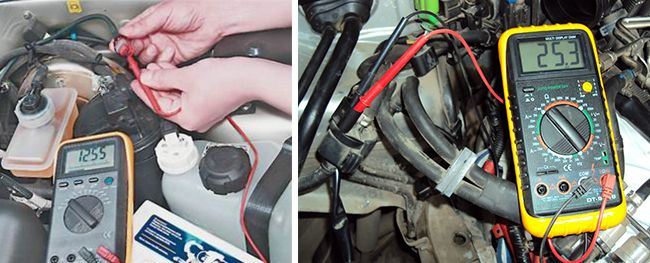

- Remove the purge valve. To remove it, you need to slightly loosen the fastening of the clamps with a screwdriver. After that, it will be possible to easily move the valve slightly upward and smoothly pull it out along the small bracket. After that, the device must be connected directly to the battery terminals. One wire goes to the purge valve (to "+"), and the other is connected to the "minus". After that, both conductors are connected to the corresponding battery terminals. If this does not click, then the valve is completely out of order and it is best to replace it.
Damage to the adsorber
Despite the simplicity of the design, the VAZ 2114 adsorber can break down and this is determined by several signs. Increasing the pressure in the fuel tank is one of them. Earlier it was said that vapors enter the adsorber, but if it breaks down, they simply accumulate in the tank. This can lead to deformation of the latter.It is very simple to identify a breakdown - when you unscrew the plug from the filler neck, you can hear a hiss, as if air is coming out from the inside.
And a less obvious sign is unstable idle. True, this symptom appears somewhat less frequently. The best way to solve problems is to completely replace the device, since its cost is relatively low. The price, depending on the manufacturer, ranges from 600-1200 rubles. But some motorists decide to completely remove the VAZ 2114 adsorber. What is needed for this?
We put a new adsorber valve
It is not necessary to contact a car service to replace an element. Work can be done independently with a few Phillips screwdrivers. You also need to purchase a new valve (its marking must completely match the data on the old device).
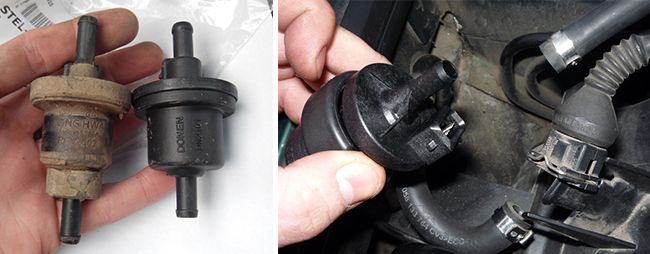

After that:
- We find the adsorber.
- We remove the negative terminal from the battery.
- Disconnect the wiring block by pressing the latch and pulling the device towards you.
- We loosen the fastenings of the solenoid valve and disconnect the hoses.
- We take out the old device (the bracket will come out with it) from the absorber.
- We install a new device and assemble everything in the reverse order.

